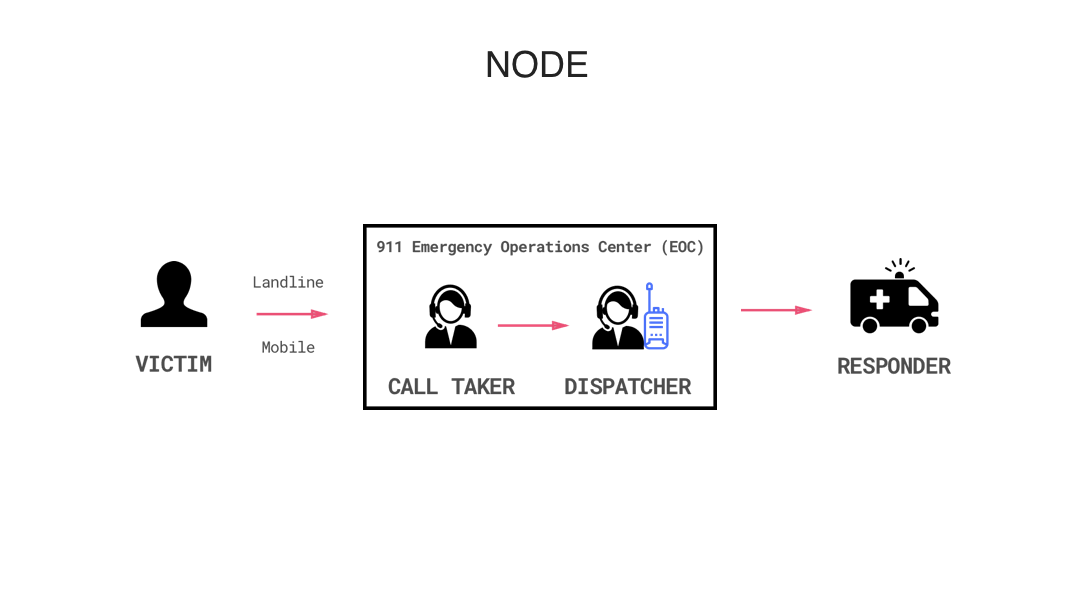Harvard Graduate School of Design | Fall 2017
Deployable Surfaces: Dynamic performance through multi-material architectures
Team | Kevin Chong , Eliza Pertigkiozoglou, Carla Saad, Anne Stack
Instructors | Chuck Hoberman, Jonathan Grinham
Harvard Graduate School of Design | Fall 2017
Deployable Surfaces: Dynamic performance through multi-material architectures
Team | Kevin Chong , Eliza Pertigkiozoglou, Carla Saad, Anne Stack
Instructors | Chuck Hoberman, Jonathan Grinham
Harvard Graduate School of Design | Fall 2017
Deployable Surfaces: Dynamic performance through multi-material architectures
Team | Kevin Chong , Eliza Pertigkiozoglou, Carla Saad, Anne Stack
Instructors | Chuck Hoberman, Jonathan Grinham
NODE
reimagining emergency
response for resilient
cities

NODE
reimagining emergency
response for resilient
cities

NODE
reimagining emergency
response for resilient
cities

NODE
for resilient cities
reimagining emergency response

Overview.
Node is a smart, comprehensive emergency response system built on resilient wireless routers and leveraging community engagement to reimagine the future of urban disaster preparedness.
Team
Advisors
Berto Ceballos
Jenny Fan
Carla Saad
Heather Boesch
Fawwaz Habbal
Jock Herron
Chuck Hoberman
Peter Stark
Collaborative Design Engineering Studio II
Harvard Graduate School of Design + School of Engineering & Applied Sciences
Framework.

The Problem
Natural disasters and other large-scale emergencies are impacting city-dwellers more than ever. When these situations arise, official 911 emergency operation centers (EOCs) play a critical role in communicating and coordinating relief efforts and medical assistance. Despite this, EOCs rely on aging infrastructure built in the 1960s, a world with landlines, printed manuals, and radiofrequency communication, but no mobile phones, cloud databases, or Internet Protocol-based communication.
From Hurricane Harvey to Irma to Maria, cities are not equipped to deal with the scale of disaster response required by recent 21st-century storms. When official services like local police and FEMA (the US Federal Emergency Management Agency) are overwhelmed, civilians rely on neighbors and spontaneously organized groups like the Cajun Navy, which consists entirely of volunteer dispatchers and boat rescuers. But, the paradox of emergent groups is they cannot scale from the bottom-up without eventually compromising in effectiveness or safety, while official top-down services have difficulties reaching the victims on the ground efficiently.

Resilient
Smart
Contextual

The solution
Node is a smart, comprehensive emergency response system built on resilient wireless routers and leveraging community engagement to reimagine the future of urban disaster preparedness.
A distress call app transmits relevant data about a
caller’s location, medical history, and urgency.
An AI agent triages for first responders or nearby volunteers depending on system load. In cases of extreme infrastructure damage, users can also connect to the LoRaWAN-based wireless mesh network nodes for backup connectivity



Caller Triage
Supports dispatchers with
AI voice interface to triage
and filter out low-urgency calls
Contextualizes user's call with personal data



Key Takeaways
-
Conducting thorough heuristic research and interviewing stakeholders help construct the story and understand the problem.
-
Designing a solution for a complex problem might involve combining multiple technologies to construct a holistic resilient system.








